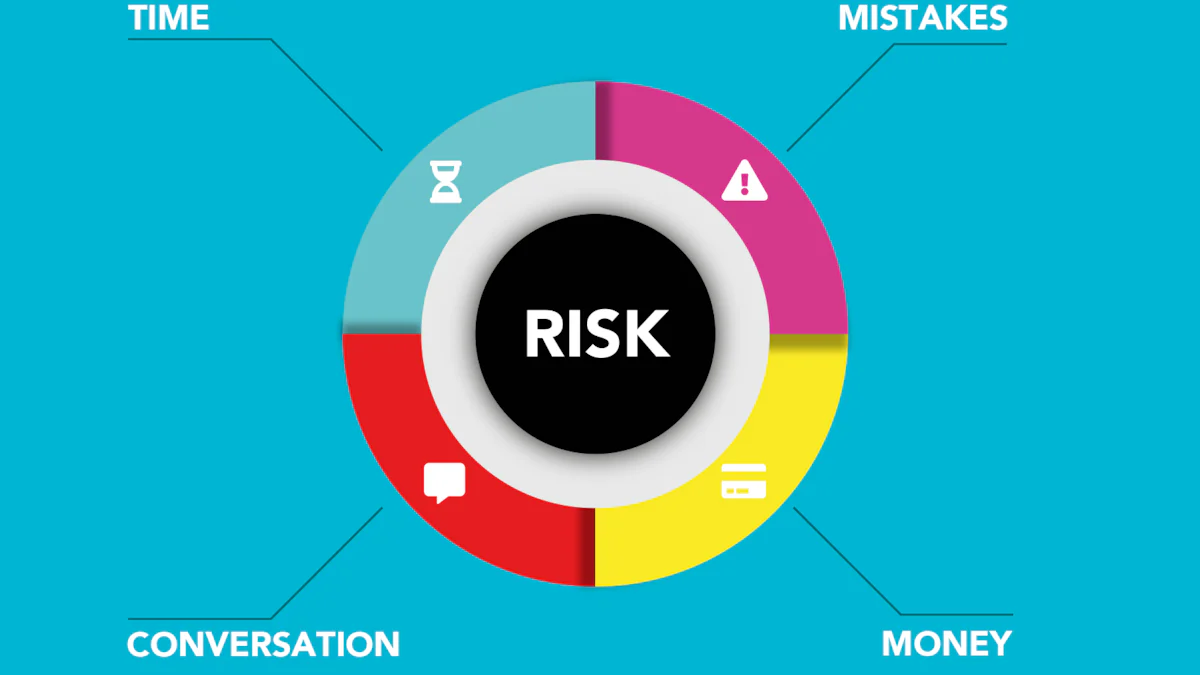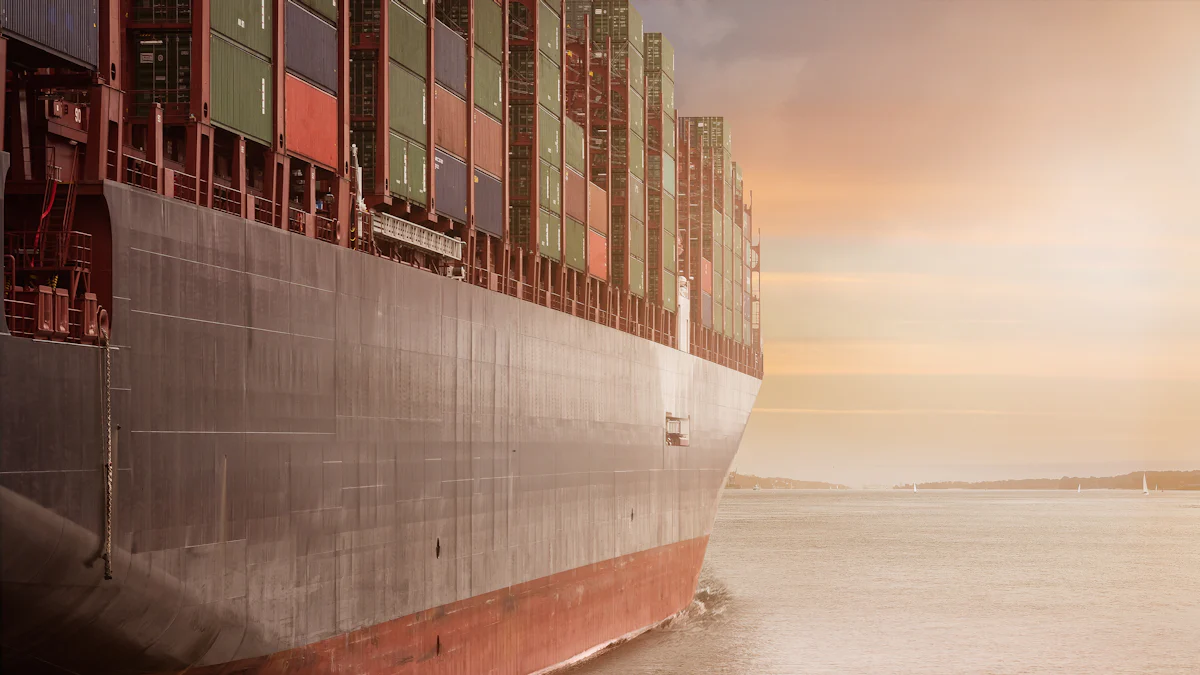The Risk Factor: Safeguarding Your Supply Chain

Supply chain management plays a crucial role in ensuring seamless operations for businesses. Understanding the supply chain risks is essential to mitigate potential disruptions and maintain efficiency. This blog aims to delve into the various challenges faced by supply chains globally, offering insights into risk identification and mitigation strategies. By exploring the impact of these risks, readers can gain a comprehensive understanding of safeguarding their supply chains effectively.
Understanding Supply Chain Risks

When considering the Types of Supply Chain Risks, it's crucial to acknowledge the diverse challenges that can impact global operations. Global Political Unrest is a significant risk factor that can lead to disruptions in the supply chain network. This instability can result in delays, increased costs, and even loss of business opportunities. Economic Factors and Inflation also play a pivotal role in shaping supply chain risks. Fluctuations in economic conditions and inflation rates can directly influence production costs, pricing strategies, and overall profitability. Moreover, Climate-Driven Disruptions pose a unique challenge to supply chains worldwide. Natural disasters, extreme weather events, or environmental changes can severely affect transportation routes, inventory management, and supplier reliability.
In terms of the Impact of Supply Chain Risks, companies must be prepared to address various consequences that may arise. Operational Disruptions are among the most immediate effects of supply chain risks. These disruptions can lead to production halts, delivery delays, and customer dissatisfaction. Addressing these issues promptly is essential to maintain operational efficiency. Furthermore, Financial Losses represent a tangible outcome of supply chain risks. Increased expenses due to unforeseen circumstances or revenue losses from disrupted operations can significantly impact a company's bottom line. Additionally, Reputational Damage is a critical concern for businesses facing supply chain risks. Negative publicity resulting from operational failures or product quality issues can tarnish a company's image and erode consumer trust.
To mitigate these risks effectively, organizations must adopt proactive measures that enhance their resilience and responsiveness to potential threats within the supply chain network.
Strategies to Safeguard Your Supply Chain

In the realm of supply chain management, risk identification and assessment serve as the foundational pillars for safeguarding operations. By meticulously analyzing potential risks, organizations can proactively anticipate challenges that may disrupt their supply chains. This strategic foresight enables companies to implement targeted mitigation strategies, thereby fortifying their resilience against unforeseen adversities.
To effectively combat supply chain vulnerabilities, it is imperative for businesses to prioritize risks based on their potential impact and likelihood of occurrence. This systematic approach empowers organizations to allocate resources efficiently towards mitigating high-priority risks, ensuring a robust defense mechanism against disruptions. By embracing a culture of continuous risk assessment and adaptation, companies can navigate the dynamic landscape of global supply chains with agility and precision.
Furthermore, implementing risk mitigation strategies such as diversifying suppliers and investing in technology plays a pivotal role in enhancing supply chain security. Diversifying suppliers not only mitigates dependency risks but also fosters competitive pricing and operational flexibility. Embracing technological advancements equips organizations with real-time visibility into their supply chains, enabling proactive risk management through data-driven insights and predictive analytics.
In the pursuit of safeguarding their operations, companies must focus on enhancing supply chain resilience through strategic initiatives. Building strong relationships with key stakeholders cultivates trust and collaboration, fostering a resilient ecosystem capable of weathering disruptions collectively. Additionally, developing comprehensive contingency plans empowers organizations to respond swiftly to unforeseen events, minimizing downtime and optimizing recovery processes.
As highlighted by recent studies on supply chain risk management, organizations that prioritize proactive risk mitigation strategies are better equipped to navigate uncertainties and sustain long-term success. By embracing a holistic approach that integrates governance mechanisms with digital tools for monitoring leading indicators of risk, businesses can proactively identify and address vulnerabilities within their supply chains.
Future Developments in Supply Chain Management
Emerging Technologies
In the realm of supply chain management, embracing AI and Machine Learning technologies revolutionizes operational efficiency. By integrating AI algorithms into decision-making processes, organizations can enhance forecasting accuracy, optimize inventory management, and streamline logistical operations. Machine learning algorithms analyze vast datasets to identify patterns and trends, empowering businesses to make data-driven decisions swiftly. The synergy between human expertise and AI capabilities fosters a dynamic ecosystem that adapts to evolving market demands seamlessly.
Advantages of AI and Machine Learning:
Enhanced Forecasting: AI algorithms predict demand fluctuations with precision, enabling proactive inventory management strategies.
Optimized Operations: Machine learning streamlines processes by identifying inefficiencies and recommending operational improvements.
Real-time Insights: AI provides real-time visibility into supply chain performance metrics, facilitating agile decision-making.
Moreover, the integration of Blockchain technology in supply chain networks enhances transparency, security, and traceability. Blockchain's decentralized ledger system ensures data integrity across the supply chain, reducing the risk of fraud or unauthorized alterations. Smart contracts automate agreement enforcement between parties, streamlining transactions and minimizing disputes. By leveraging blockchain technology, organizations can establish trust-based relationships with suppliers and customers while mitigating risks associated with data breaches or counterfeit products.
Benefits of Blockchain Integration:
Transparency: Blockchain enables stakeholders to track product origins, certifications, and compliance throughout the supply chain.
Security: Decentralized encryption secures sensitive data exchanges and prevents unauthorized access or tampering.
Traceability: Immutable records on the blockchain provide a comprehensive audit trail for every transaction, enhancing accountability.
Evolving Risk Management Practices
As supply chains evolve in complexity and scope, proactive risk management practices become paramount for organizational resilience. Embracing a culture of Proactive Risk Management involves anticipating potential threats before they escalate into disruptions. By conducting regular risk assessments and scenario planning exercises, companies can identify vulnerabilities proactively and implement preemptive measures to mitigate risks effectively.
Key Aspects of Proactive Risk Management:
Conducting Regular Assessments: Continuous evaluation of supply chain risks enables timely interventions to prevent operational disruptions.
Scenario Planning: Simulating potential risk scenarios helps organizations develop response strategies that minimize impact on operations.
Stakeholder Collaboration: Engaging key partners in risk management discussions fosters collective problem-solving approaches that enhance preparedness.
Continuous Monitoring is another critical aspect of modern risk management practices within supply chains. Leveraging advanced analytics tools allows organizations to monitor key performance indicators (KPIs) in real time, enabling early detection of deviations from expected norms. By establishing automated alerts for anomaly detection or threshold breaches, companies can respond promptly to emerging risks before they escalate into crises.
Benefits of Continuous Monitoring:
Early Risk Detection: Real-time monitoring identifies deviations from standard operating procedures promptly.
Data-driven Decision Making: Analytics tools provide actionable insights based on performance metrics for informed decision-making.
Enhanced Resilience: Proactive monitoring equips organizations with agility to adapt quickly to changing market conditions or unforeseen events.
To safeguard the supply chain effectively, organizations must recap key points, emphasizing the impact of proactive risk management.
Implementing a proactive risk management culture is crucial for identifying, assessing, and mitigating potential risks.
Proactive risk management allows companies to seize new opportunities and gain a competitive edge.
Building strong layers of defense and fostering a risk-aware culture are essential for sustaining a competitive advantage in today's dynamic business environment.
See Also
Seamless Success: Ensuring Supply Chain Continuity
Price Increase Perspectives: Managing Supply Chain Interruptions
Assessing Your Efficient Supply Chain: Discover Today!
The Superiority of JUSDA's Supply Chain Solutions
Efficient Fixes for High-Tech Manufacturing's Supply Chain Challenges
